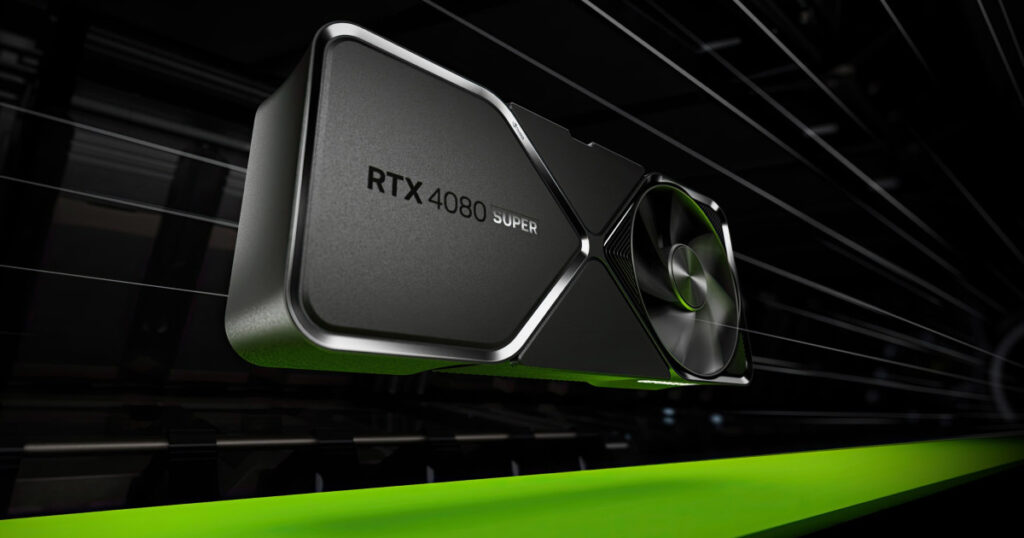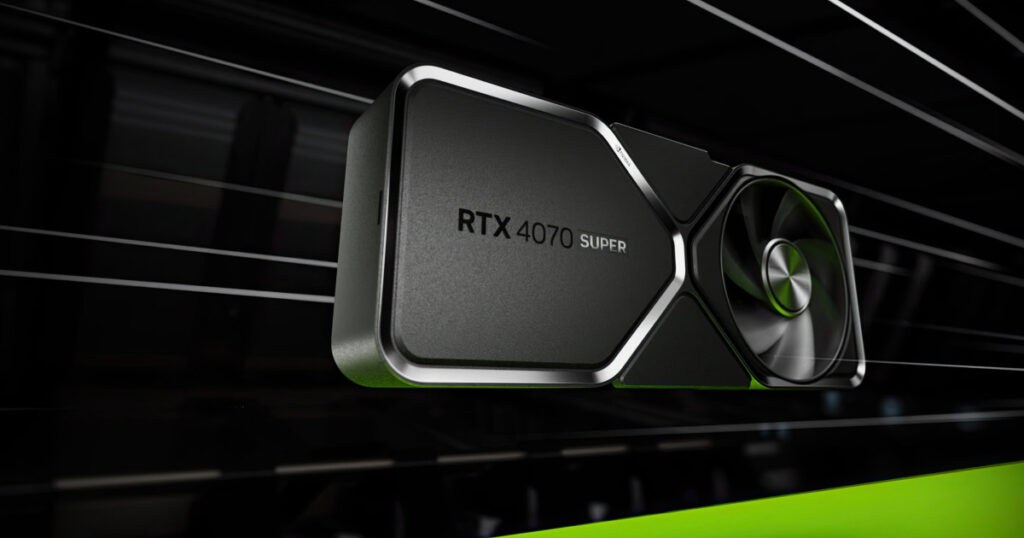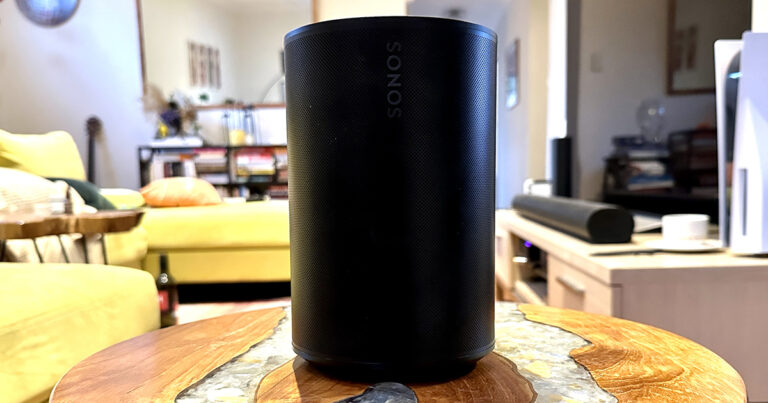And far easier to get than an Eras tour ticket.
Sonos Era 100 review: More than great sound
The Era 100 represents a solid step up in sound for Sonos' small speakers. It replaces the Sonos One and touts upgrades like genuine stereo audio and a 25% larger woofer for better bass. These make a genuine difference, but are also the Era 100's least exciting updates. The real meaningful change is just how versatile the Era 100 is.
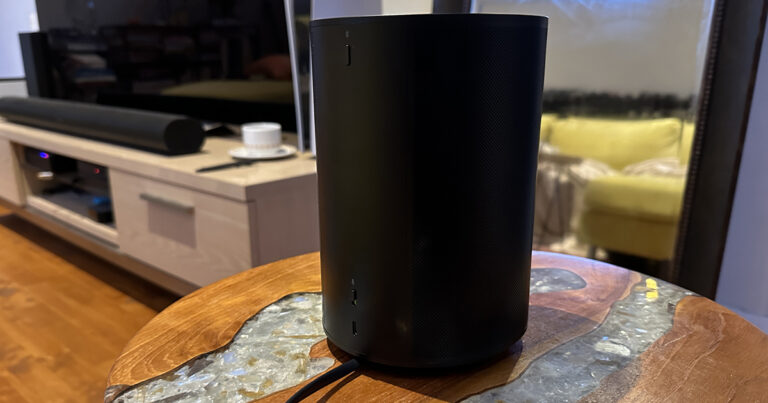
Sonos Era 100: Connectivity
Sonos has been making great speakers for its life as a brand, but they've always had their quirks that you could nit-pick or reasons you might avoid them. The Era 100 whittles these away to the point where it's genuinely hard to fault.
A common criticism of Sonos' home speakers is that they don't include Bluetooth. You have to use the Sonos app or AirPlay to control them. The Era 100 addresses this, and is the first non-portable Sonos speaker to include Bluetooth connectivity (alongside the new Era 300).
While you still need to set up the Era 100 with the Sonos app on your home WiFi, you can then use it as a Bluetooth speaker. This works whether you're at home, or have decided to take it out and about. I took the Era 100 to Brisbane for a week I was staying with my parents, and being able to use it as a Bluetooth speaker makes for a far better experience than having to set it up on their WiFi, then reset it and set it up on my own network when I got home.
One neat feature is that if you're at home, the Era 100 can share whatever you're Bluetoothing with the rest of your Sonos speakers. Using Bluetooth doesn't get rid of its multi-room capabilities. Bluetooth is however disabled if you're using the Era 100 as a rear speaker in a surround sound setup.
Similarly, the Era 100 now features line-in input. This has previously been exclusive to Sonos' high-end speakers like the Five. While we're not really passing aux cords these days, line-in is still invaluable if you want to connect a device like a turntable to a Sonos speaker.
The one catch is you'll need a dongle. The Era 100 has a USB-C port on the back, and you'll need an official Sonos USB-C dongle if you want to plug in a 3.5mm cable. These will set you back a minimum of $35. Considering Apple charges $15 for its USB-C to 3.5mm adapter, $35 is a bit too pricey. And even then, it would have been great to see Sonos just include the dongle in the box.
The last piece in the versatility puzzle is Trueplay without the need for an iOS device. Trueplay is Sonos tech that retunes the speakers to the room they're in. For example, Trueplay might dial down the bass if your Era 100 is too close to walls it can reflect from.
Until now, this could only be done using the Sonos app on iPhone or iPad. The Era 100 (and the Era 300) can run the Trueplay process using their internal microphones, allowing Android users to take advantage of the re-tuned sound.
Using an iOS device gets you a more advanced version of Trueplay since you can walk around your room to capture additional information, but having some form of Trueplay is a big improvement over being locked out from it entirely.
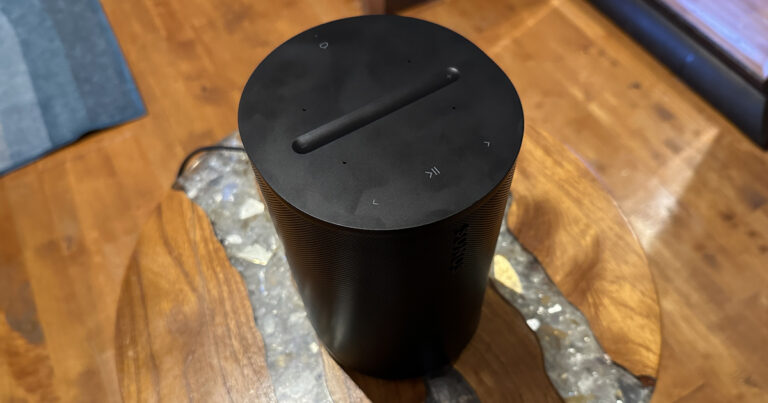
Sonos Era 100: Audio quality
Of course, none of these quality-of-life improvements would matter if the Era 100 had subpar audio quality. Thankfully that's not the case. The Era 100 is sounds great.
The audio profile is balanced, with clear definition between highs, mids, and lows, for the most part. Despite the larger woofer, bass can come across as recessed in some songs.
When looking at our audio testing playlist, the sub-bass hits in Childish Gambino's "3005" lose some of their visceral impact on the Era 100. Similarly, Opeth's "The Funeral Portrait" could use extra low-end definition to help the kick drum and bass guitars pop just that little bit more.
Actual stereo-separation is the other big audio improvement for the Era 100, and for a small speaker, it's surprisingly good. On a song with hard pans to the left and right, like The Weeknd's "Blinding Lights", you can clearly hear the stereo speakers doing their thing. The effect is less pronounced on subtler tracks, however. You can hear the synths slinking back and forth between channels on Pink Floyd's "Comfortably Numb", but only if you're listening for it.
Given the $80 difference in price and launch proximity, it's hard not to compare the Era 100 to the second-generation HomePod. The HomePod has a clear advantage when it comes to bass, being able to hit lower notes with greater impact. On certain tracks, you can feel the low end if you're close enough. That's something the Era 100 simply can't achieve, despite the similar size.
The Era 100 does however offer better overall clarity, and avoids the HomePod's tendency to overemphasise vocals. It also has actual stereo audio, which the HomePod simply doesn't.
One area where I would have liked to see Sonos take some inspiration from Apple is spatial audio. While the Era 300 supports the new audio format, the Era 100 doesn't benefit from upward-firing speakers or Dolby Atmos support. This would have been especially useful for those hoping to use Era 100s as rear speakers in a home theatre setup.
Is the Sonos Era 100 worth it?
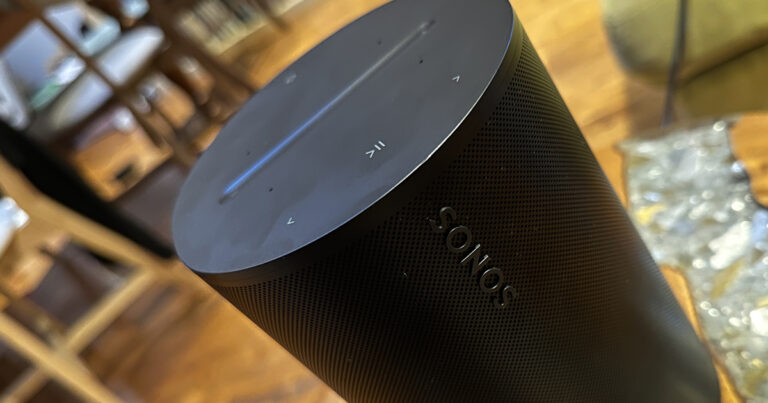
The Era 100 is the easiest a Sonos speaker has ever been to recommend. While it's a shame it's $80 more expensive than the Sonos One it replaces, the added versatility helps justify the cost. Sonos has all but gotten rid of the "ifs or buts" one might have typically had when considering its ecosystem thanks to additions like Bluetooth and line-in. They're welcome bonuses on top of great audio quality.
Related Articles
